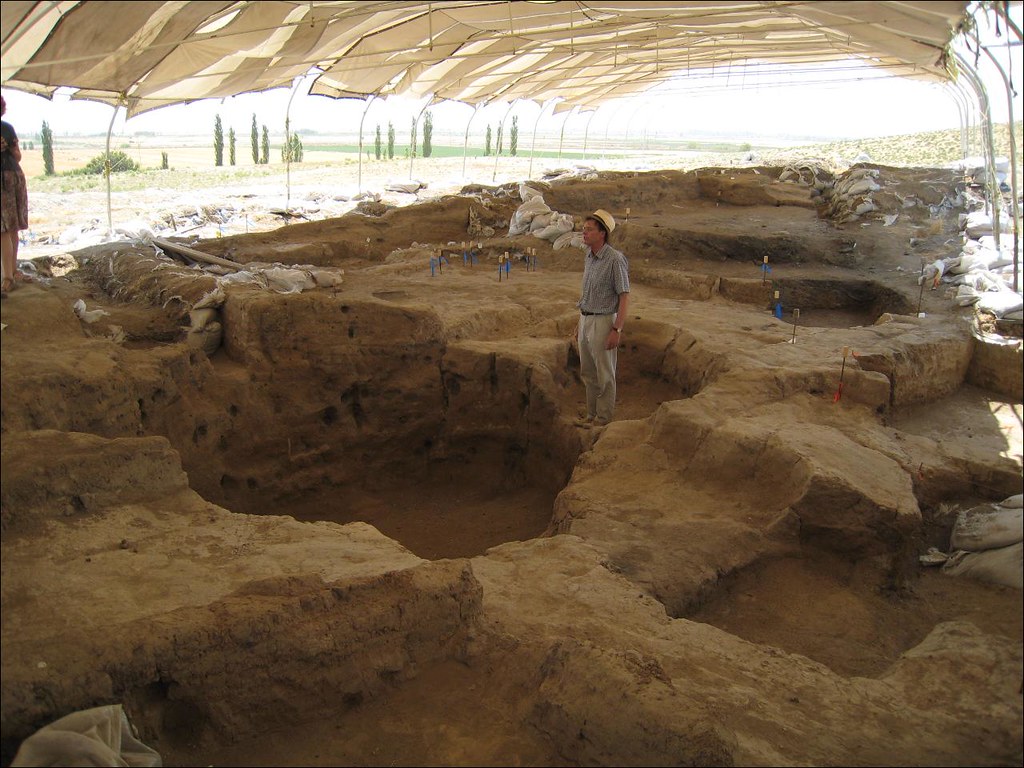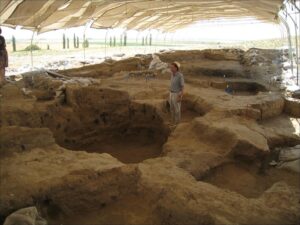This was a case study for an MLA London Workshop on 'Web 2.0 and Social Networking for Museums, Libraries and Archives', held in London on July 14, 2008.
Panel paper: The role of the IT professional in a heritage institution
I was a guest speaker on a panel for a course in 'Culture and Heritage Informatics' at Kingston University, London, April 28, 2008. I have summarised some of the discussion on the Museum of London blog and on my personal blog.
Now I look back on it, this is probably where I started to develop ideas about the role of the 'cultural heritage technologist'.
Presentation: MultiMimsy and the possibilities for OAI
Presentation: MultiMimsy database extractions and the possibilities for OAI-based collections repositories at the Museum of London
UK MultiMimsy Users Group. Museum in Docklands, London, April 18, 2008.
A little Web 2.0 goes a long way
These notes are taken from a panel presentation for the e-learning group held a 'Wine, Web 2.0 and What's New' event. The other panel members were Frankie Roberto (Science Museum), Mike Lowndes (ex-Natural History Museum) and Guy Grannum (National Archives).
Web 2.0 offers many exciting opportunities and you may feel under some pressure to 'go 2.0' and become fully buzzword-compliant. But wait! We shouldn't rush to replace existing systems or spend huge sums and many months on the latest technology buzzwords.
Instead, my contention is that a little Web 2.0 goes a long way, and is particularly useful when publishing niche content. Small scale projects can help expose your content to new audiences by making your content available for 'serendipitous discovery' or by making it accessible to potential but untapped audiences.
We can take advantage of low-cost, lightweight infrastructure/implementation nature of Web 2.0 applications to try small-scale online publishing projects. (As Frankie pointed out, make sure you take the time to inhabit Web 2.0 sites yourself first so you're familiar with the subtleties of how each site works).
For example, you can use Web 2.0 technologies to publish niche or specialist data that rarely gets funding for online publication (especially if it's not 'general' or schools audience-friendly) but is of great interest to, and a useful resource for specialist audiences.
Monitoring and evaluating the use of this data also allows specialists to make the case for further projects or better resources by demonstrating that there is public and peer interest in their objects, archive, collection or subject.
I'm going to briefly present two examples: Flickr, and addthis.
You can easily upload images from community projects or collections to Flickr, add appropriate metadata (titles, descriptions, labels), organise them into collections or sets, and geo-locate them by dragging them onto a map – all of which can enable the discovery of your collections by traditional or non-traditional, local or international audiences. It also makes your metadata available to search engines and can draw people back to your branded websites.
For instance, up to 70% of referrers on individual photos from the London Archaeological Archive and Research Centre on Flickr are from external search engines. Generally the figure is around 20% (with the rest of the referrers being searches or browsing within Flickr), but it depends on the titles, descriptions and tags used.
Sites like Flickr don't replace a good content management system or collections database, but it can help you publish data that would otherwise never be seen.
For example, a small museum might use Flickr to publish object images and descriptions as a 'mini exhibition' or collection it couldn't otherwise afford to commission and host; or a department might put together a collection of their favourite items that are too fragile to display and link their Flickr page to blog posts about the objects and answer questions from visitors about the objects. We've used Flickr and blog software to publish a year-long research project about the glassworkers of Roman London for a whole new audience and for another 'behind the scenes' blog that is an experimental 'sneak peak into the working life of a museum'.
Sites like Flickr also provide easy ways to have visual 'conversations' with your visitors. The Dulwich Picture Gallery is a good example of the use of Flickr to build a community of visitors around event images.
Simple Web 2.0 applications or 'recommendation' services can help your audiences use your content in their 'real world' and share it with their friends and peers. You can take advantage of existing visitor habits online and follow the users' lead rather than blundering into their sites and committing a netiquette faux pas.
For example, addthis.com provides code that displays a button that you could put on your collections, events, research or venue information pages. When the visitor clicks the button, they can save the page to a shared or social bookmarking site like delicious or digg, share it on their Facebook page or blog it on their own site.
If you register for an account and put your username in the provided code, you can view reports that show which objects, events or information pages have been saved for reference or shared with others. This also provides an insight into which pages contain interesting or accessible content, which can in turn motivate internal content creators and help improve your online offerings.
The nice thing is that addthis do all the worrying about keeping up with the latest trends in social or participatory Web 2.0 sites for you as they adjust and update the button accordingly.
One important point you should always consider is your 'exit strategy' – is the data and the publication method future-proof? What if standards change? What if the company goes bust? Do you own your content? Can you get any user-generated content out? What if you invest in a site and it's suddenly no longer trendy? What if you're overrun by spam or the context around the content changes? However, you can generally mitigate these concerns if you address them at the start of the project and work through them.
In summary, Web 2.0 technologies allow you to be clever about how you give new life to existing content and offer your content the chance to be part of worldwide conversations.
2007: an overview
An incomplete, retrospective list of work, talks and more in 2007…
I started to teach on a new Digital Humanities course in the Spring/Summer Term 2007 at Birkbeck. 'Introduction to Digital Humanities' was a new postgraduate course at Birkbeck College which combined aspects of media studies, humanities computing and literary studies to foster an appreciation of the core methods and practical, political/philosophical and pedagogical issues in digital humanities.
I devised and taught classes on:
- Introduction to Databases, February 27, 2007
- Creating Digital Resources, May 1, 2007
- New Working Models, May 15, 2007
- Creating Digital Resources II: database design for the digital humanities, May 29, 2007
I also gave a class on 'Computer assisted interpretation; integration of finds and site sequence' for the Birkbeck MA Archaeology Module "Archaeological Post-Excavation and Publication".
I gave a paper: Buzzword or benefit: The possibilities of Web 2.0 for the cultural heritage sector at the CAA (Computer Applications and Quantitative Methods in Archaeology) UK Chapter Meeting, January 24 – 26, 2007, Tudor Merchants Hall, Southampton
I gave what was possibly my first paper at an MCG conference, Sharing authorship and authority: user generated content and the cultural heritage sector (so web 2.0!) at Web Adept: UK Museums and the Web 2007, Leicester, June 22, 2007.
I started a blog for the Museum of London (so 2007) – 'first post', 'What does a database programmer do in a museum?'. A hilarious attempt to make my bio relatable: 'My job title is 'Database Developer', which means I am a specialised kind of computer programmer. I spend a lot of time working with the big databases that people like curators, collections managers, archaeologists and archivists use to record, analyse and publish their data. I talk to them to understand their requirements, then update or create applications to help them. I also help with geek stuff for the websites'. The blog didn't last, as so many didn't, but I still think 'About my museum job' posts were a great way to make museums more inclusive by showing all the different types of careers you could have in a museum.
I published a report: Nick Holder, Mia Ridge and Nathalie Cohen, The Tony Dyson Archive Project: Report of a pilot study investigating the creation of a digital archive of medieval property transactions along the City waterfront, Museum of London Archaeology Service. The linked file is a PDF version of the report, without mapping and plan diagrams.
I also contributed to the Çatalhöyük Archive Report 2007; an excerpt of my main bits is at https://doi.org/10.17613/3n8z-9z11. Blog posts on/from Çatalhöyük include:

